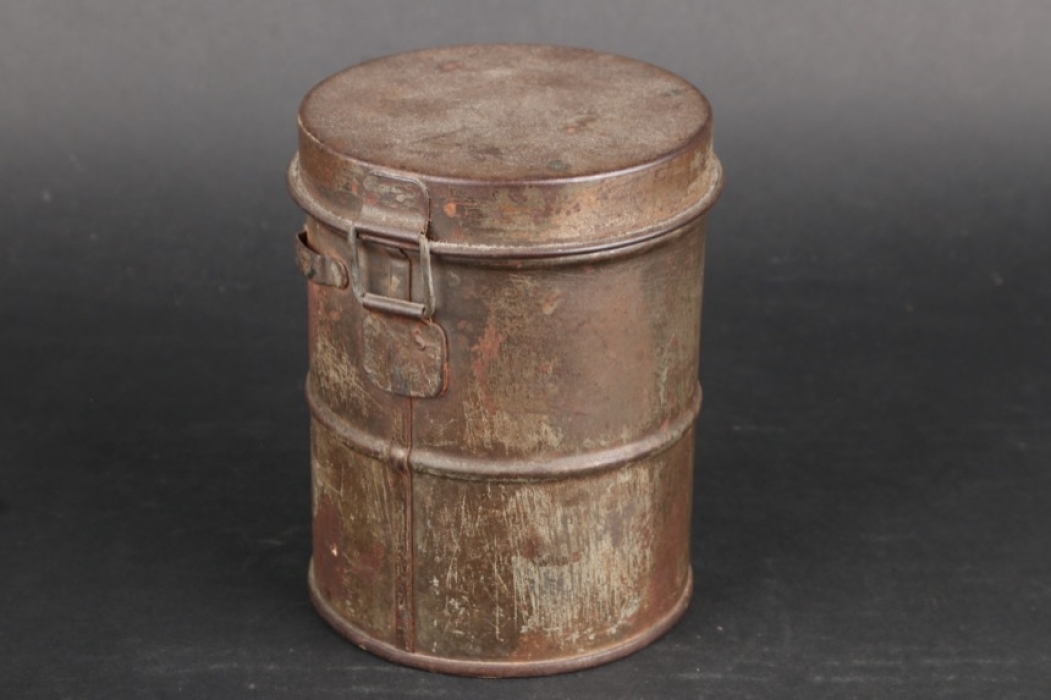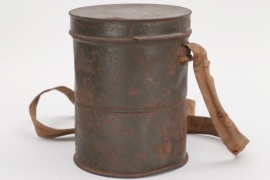3rd USA auction
Bidding on 1172 lots has ended on 19th March 2023. 75% of all lots sold

Can for M1916 gas mask
GBP 0,00
Own a similar product you want to sell? We are here for you at +49 8541 9053699
-
PAYMENT
-
HOW CAN I PAY FOR MY ORDER?
AUCTIONSYou will receive an e-mail confirming your successful bids the day after the auction has ended. In your personal my ratisbon's you will be able to inform us about your most convenient payment method for this order or tell us about an alternative shipping address.
If we don’t hear from you within 24 hours, we will send an invoice choosing the payment and shipping options which we think are the most comfortable ones to you. If you decide to change your shipping or payment method after receiving your invoice, just drop us a line or visit my ratisbon's/ORDERS for any more details.
SHOP ORDERSChoose your payment method when ordering and submit your order. Once your order has been received we will send an invoice including your shipping costs and your payment instructions.
After receiving the invoice, the order must be paid within 7 days.
Please contact us to discuss layaway options.To learn more about paying at ratisbon's, please see your FAQ pages.
WE ACCEPT FOLLOWING PAYMENT METHODS
-
-
Versand
-
HOW DO YOU SHIP MY NEW TREASURES?
PACKING & TRACKINGWe usually send out orders within 1-3 working days after your payment has been received. In most cases, we are faster than this! We will inform you when your goods are being dispatched and provide a tracking number, In addition, you can always check your order status at my ratisbon's/ORDERS. Delivery times will vary depending upon the delivery destination and type of shipping service you have chosen.
SHIPPING TO ALTERNATIVE ADDRESSIf you prefer to have your order shipped to your work address or a friend during your absence, we will happy to arrange this for you. Send us an email letting us know about your new shipping address and we will be happy to send an updated invoice to you.
OUR LOGISTIC PARTNERS ARE AS FOLLOWS
-
-
OUR GUARANTEE
-
 OUR GUARANTEE!
OUR GUARANTEE!We only offer collectables which to the best of our specialists knowledge are authentic. About 15% of all consignments are returned to the consignor after extensive research due to authenticity issues.
Unlike traditional auction houses we do offer a full right of return. If you are not satisfied with what you won or bought, you may return it within 14 days. Please inform us and we will instruct you on how to return the goods. For more information, please visit FAQ pages.
Important note: Cancelling bids after an auction may disappoint the consignor, who like you is a collector. This situation is easy to avoid. We encourage you not to bid on any collectable if you are unsure if it fits into your collection. Ask us to cancel your bid 24 hours prior to the end of an auction to avoid this situation.
-
COUNTRY Imperial Germany
DIMENSIONS 15 x 12 cm
WEIGHT
 US LOT US3-0035
US LOT US3-0035EAN 3000000026281
 US LOT US3-0035
US LOT US3-0035PERIOD until 1918
COUNTRY Imperial Germany
MATERIAL
DIMENSIONS 15 x 12 cm
MAKER
WEIGHT
COUNTRY Imperial Germany
 US LOT US3-0035
US LOT US3-0035DIMENSIONS 15 x 12 cm
EAN 3000000026281
MAKER
WEIGHT
Can for M1916 gas mask
Description
Container M1916 for a German WWI gas mask. White stamp inside. Rare!
Condition
2+
Seller
History Trader Inc., 521 Thorn Street #165, Sewickly, PA 15143-0165, USA
OBJECT NAME
Bereitschaftbüchse (or ready-to-use single container, known among collectors as Type M1916)
NATION
German Empire
DATE OF INTRODUCTION
March 1916 (KM n.5200/ 3.16)
FEATURES
It was the first container made from a single piece of pressed steel to be used as a container for the Rahmenmaske (frame gas mask) and also for the older Linienmaske (line gas mask), both of which came with a gas filter already screwed on: before this container was introduced, the mask and two spare filters were stored in separate tin containers.
Its main features are a cylindrical body with a groove in the middle of the body, a closing lid with a small iron tab to open it and with a paper disc with instructions on how to use the gas mask on the inside. On the inner bottom, two crossed steel springs were used to lock the gas mask filter when the mask was stored inside to prevent the mask from accidentally falling out of the container, as the closing lid did not have any retention hooks.
On the outside, two upper steel loops were used for fastening the carrying strap, while a third on the bottom was used for a strap to fasten the buttons of the soldier's tunic.
Some variants are known due to technical improvements, for example those with a wire cross on the inside of the closing lid, or the type that is lacquered all black on the inside.
MANUFACTURERS
The manufacturers were unknown until now, but it is assumed that there were many steel companies that produced it, considering the presence of many different acronyms stamped on them.
WEARING METHOD
Every soldier and officer at the front had to carry his gas mask with him. The carrying can was usually hung from the neck and put on the breast or on the side. When the gas alarm was given, he must quickly open the can, extract the gas mask and fit it to the wearer’s head. Filters could be easily changed by unscrewing the first and screwing on the new one. After use, the mask had to be cleaned, checked if damaged or not, and put completely dry inside the carrying can.



